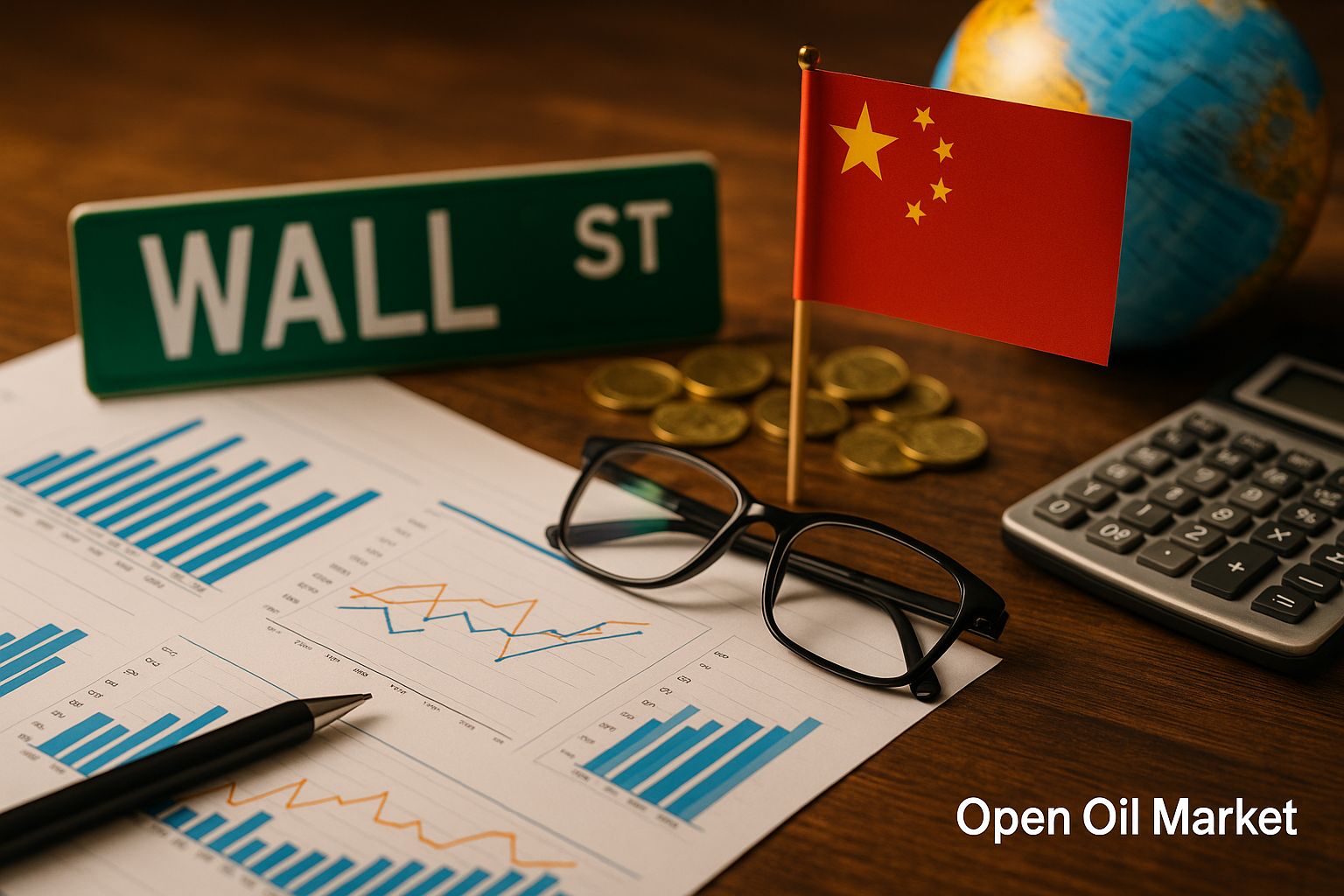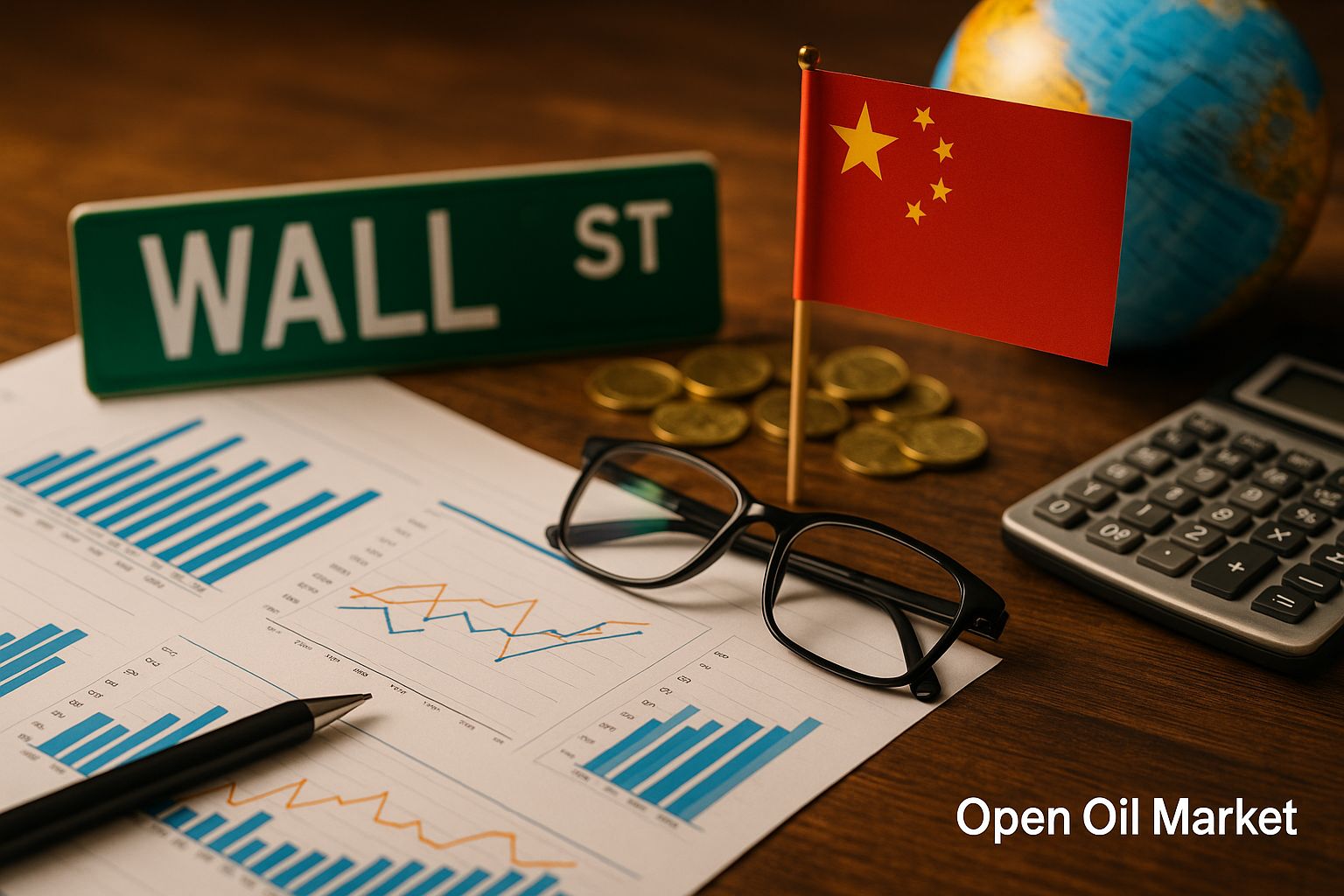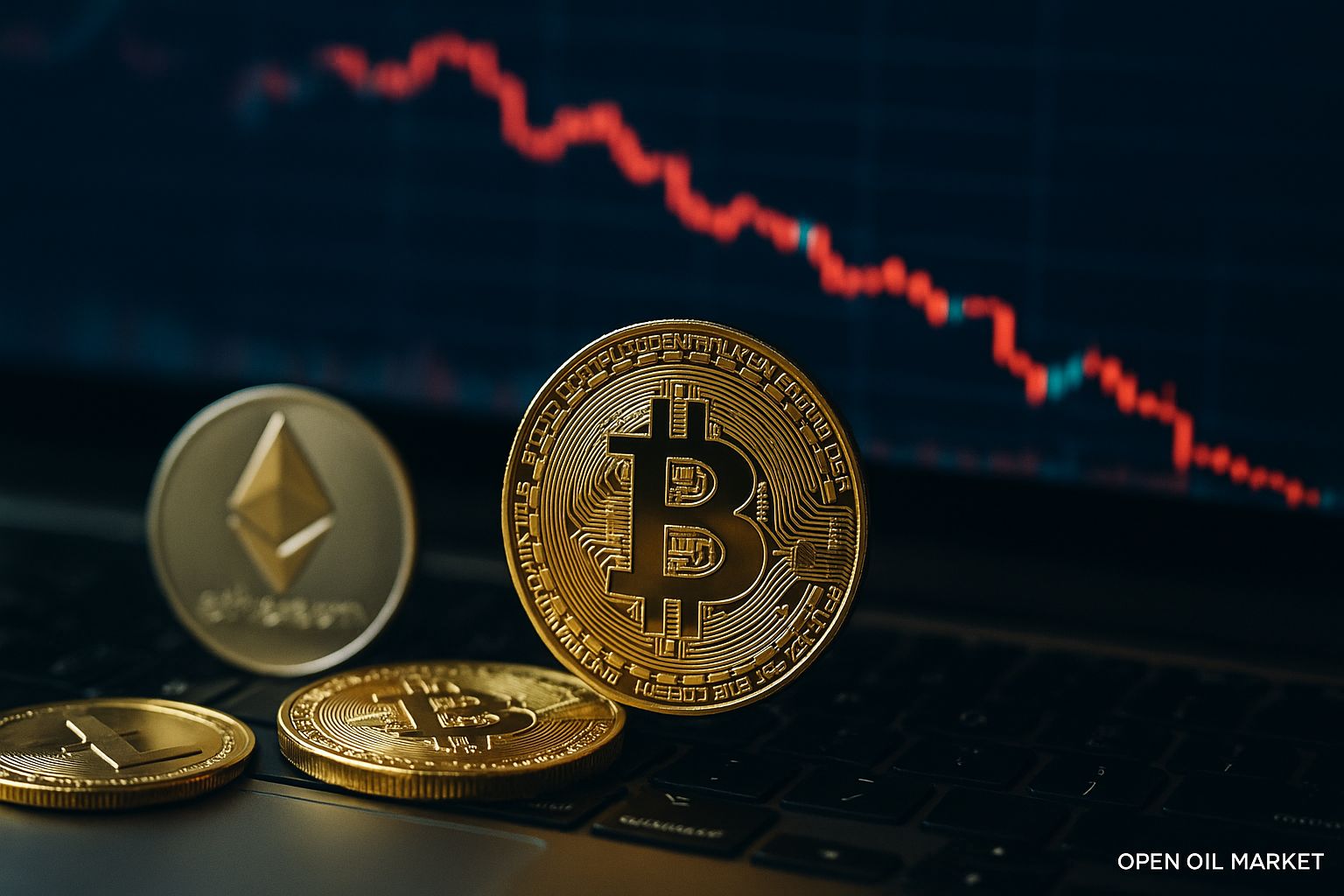How to Choose a Broker for Stock Trading
In the world of financial markets, where trillions of dollars change hands daily, selecting the right broker can be the deciding factor between success and disappointment for millions of traders. Imagine spotting a promising uptick in Tesla shares or the RTS index, but without a reliable intermediary, your ideas remain on paper. In 2025, considering geopolitical shifts, digitisation, and the increasing accessibility of markets for retail investors, the right broker does not merely open the door to the stock market — it minimises risks, reduces costs, and enhances your strategy. According to the World Federation of Exchanges, retail trading volumes have increased by 25% over the past year, with many novices, inspired by success stories like Warren Buffet or modern influencers, rushing into this world. However, the statistics are unforgiving: around 70% of novice traders lose their capital in their first year, with a significant portion of these losses attributed to poor platform choices. This guide will help you navigate how to avoid common pitfalls, relying on proven criteria and real-world examples from global practices.
Key Criteria for Choosing a Broker
Self-Assessment and Trader Profile
When you stand on the threshold of investment, the question "what are the key criteria to consider when choosing a broker?" becomes inevitable, especially for those just mastering stock or forex trading. Start with self-assessment: define your profile — are you a beginner seeking simplicity, or an experienced trader in need of advanced tools? Globally, according to BrokerChooser surveys, 62% of users prioritise reliability, followed by low commissions and user-friendly interfaces. In the Russian market, where access to MOEX and the St. Petersburg Exchange is critical, an ideal broker would be Tinkoff Investments, offering a zero entry threshold and integration with a banking application, streamlining fund transfers.
Criteria for Beginners and Long-Term Investors
For beginners, the presence of a demo account and educational resources is key — imagine practising with a virtual $50,000 while learning about Bitcoin volatility without incurring real losses. Long-term investors, in contrast, focus on diversification: a broker should offer not just blue-chip stocks like Apple or Gazprom but also ETFs on emerging markets or fixed-income bonds. In 2025, the demand for ESG criteria — environmentally responsible investments — is rising, with platforms like eToro enabling asset filtering based on sustainability, assisting in building portfolios that align with global trends such as the transition to green energy. Rank your priorities: safety carries an 80% weight, as even minimal risks can obliterate years of savings, while commissions are weighted at 15%, affecting overall returns.
Personalisation and Global Examples
Personalisation is another layer: scalpers trading in real time require zero order execution delay, as provided by Interactive Brokers, where the average speed is 0.1 seconds. Passive investors will appreciate automatic dividend reinvestment and robo-advisory functions, reducing emotional decision-making. According to Investopedia, ignoring these nuances results in a 40% failure rate, so create a checklist: outline your goals (15% annual capital growth?), target markets (US, Europe, Asia?), and budget (starting from $100). In a global context, Russian traders often combine local players like BCS for ruble transactions with international brokers like Plus500 for forex access without currency risks. This approach not only optimises costs but also builds a sustainable strategy tailored to your lifestyle — whether it's day trading from the office or weekly monitoring from your smartphone.
Regulation and Licensing: The Foundation of Trust
Verifying Legitimacy in Russia and Abroad
The question "how to verify if a broker is legitimate?" poses a fundamental barrier between safe trading and potential fraud, especially in an era where online scammers disguise themselves as professionals. In Russia, oversight is conducted by the Central Bank (CBR), and the list of licensed brokers — professional market participants — can easily be found on the official cbr.ru website. Seek status confirming the right to broker and dealer activities; for instance, Finam and VTB Broker have held full licenses since the 2000s, ensuring compliance with norms regarding client funds' reservation. Abroad, reliability is guaranteed by the SEC in the US (for access to the NYSE), the FCA in the UK, and ASIC in Australia — these regulators require quarterly reporting and audits, minimising risks.
KYC Procedure and Comparing Regulators
The KYC (Know Your Customer) procedure is a mandatory verification step where you provide your passport, proof of address, and source of income to prevent money laundering under AML standards. This is not bureaucracy, but protection: without KYC, brokers risk multi-million dollar fines, and you — account blockage during volatility. Offshore brokers registered in Cyprus (CySEC) or the Seychelles are often cheaper, but their protection is weaker — in the event of bankruptcy, funds are only returned through local courts, without guarantees like SIPC (up to $500,000 in the US). Compare this: the Russian CBR mandates account segregation, separating your assets from corporate ones, while the SEC adds insurance through SIPC, covering even data theft.
Geopolitical Challenges and Real Cases
In 2025, geopolitics adds complexity: sanctions restrict Russians' access to American platforms like Charles Schwab, making alternatives like Freedom Finance (Kazakhstan, with a bridge to the NYSE) or XM (Europe) more relevant. Verify current relevance: utilise regulatory registries — sec.gov for the US, fca.org.uk for the UK. If a broker is unlicensed, walk away immediately: according to FCA reports, 40% of complaints in 2024 concerned unlicensed firms, leading to 200 million euros in losses. Real cases, such as the collapse of Wirecard in 2020, highlight that a license is not merely formality but a shield that allows you to focus on strategy rather than fear the loss of capital. For global traders from Asia or Latin America, ASIC or MAS (Singapore) offer similar protection, tailored to local laws.
Commissions and Service Costs: Hidden Traps
Main Types of Commissions and Market Leaders
"How much do broker services cost?" — a question often underestimated until commissions "eat away" at 20-30% of profits, especially in high-frequency trades. The overall cost includes trading commissions (0.01-0.1% of volume), withdrawal fees ($1-5 fixed), and inactivity fees ($5-10 per month after 6 months of dormancy). Market leaders with low rates include Robinhood in the US with 0% on stocks and ETFs, or Tinkoff Investments in Russia with 0.025% for trades above 50,000 roubles, making them ideal for active traders. Spreads — the difference between buying and selling prices — are critical for forex: ECN brokers like Interactive Brokers maintain 0.1-0.5 pips on EUR/USD, while market makers like XM widen it to 1 pip but compensate with fixed fees.
Minimum Deposits and Hidden Charges
The minimum deposit ranges from 0 at eToro (social trading) to $10,000 at premium platforms like Saxo Bank, catering to institutional clients. Swaps for overnight positions — daily fees for rollover (0.5-2% annually) — can double costs for swing traders holding positions for a week. Hidden fees lurk everywhere: currency conversion (1-2% spread when converting USD-RUB), real-time data fees ($10-50/month), or inactivity fees that accumulate unnoticed. For ETFs and bonds, fees are lower: Vanguard through a broker charges only 0.03% in annual management, compared to 0.5% with active funds.
Global Comparison and Tax Aspects
In a global comparison, Russian brokers like BCS (0.05% on stocks) are advantageous for the local market, but for international forex or crypto, Plus500 with 0% commission (only a spread of 0.6 pips) is preferable. Tax implications: in Russia, the broker withholds 13% on profits automatically; in the US, the W-8BEN form reduces the tax for non-residents to 15%. To calculate, use online calculators on broker websites: input 10 trades of $1,000 — see how annual expenses rise from $50 to $200 when choosing a "cheap" offshore broker. A real example: a trader from Europe who chose a low-commission broker saved 15% on a €50,000 portfolio in a year but lost on spreads — balance is key. In 2025, the trend towards "zero" commissions (like Trading 212) simplifies choices, but always read the fine print of the contract to avoid surprises like sudden API access fees.
Trading Platforms and Tools: The Instrument of Success
Popular Platforms and Their Features
"Which platform is best for trading?" — this question pertains to your "workspace" in the market world, where convenience dictates your reaction speed to news like a Fed report. MetaTrader 5 (MT5) remains the gold standard: versatile for forex, CFDs, and futures, with thousands of indicators and automation through MQL5, allowing for the creation of arbitrage bots within hours. For stocks and options, Thinkorswim from TD Ameritrade (now Schwab) offers advanced analytics — from volatility heat maps to simulating Greeks for options, ideal for traders analysing 50+ instruments daily.
Mobile Applications and Demo Accounts
Mobile applications have evolved: Trading 212 for iOS/Android integrates charts, news, and orders in one interface, with push notifications about dividends or stop losses. A demo account is a must-have: with virtual funds ($10,000-100,000), you can test strategies like scalping on EUR/USD without risk — eToro offers this for free indefinitely. APIs for algorithmic trading open doors for professionals: Alpaca in the US is free for Python bots, integrating with QuantConnect for back-testing on 20 years of historical data, optimising strategies for current volatility.
Tools, Integrations, and Trends for 2025
Tools should cover a spectrum: from 5000+ stocks (blue chips like Nvidia or Rosneft) to gold futures and index options. Integration with TradingView is a bonus at Pepperstone: trade directly from customised charts with 100+ indicators. For scalping, latency below 1 ms is essential, as with NinjaTrader, where order execution matches institutional levels; the simplicity of WebTrader from OANDA is suited for beginners — a web version without downloads, with basic tutorials. In 2025, AI becomes fashionable: platforms like Capital.com leverage machine learning for predictive analytics, forecasting trends with 70% accuracy based on big data from Reuters and Bloomberg. Test during peak hours (NYSE opening at 16:30 MSK): if lags exceed 2 seconds, the platform is not for you. A real case: a trader from Asia, switching to MT5 with a mobile focus, increased profitability by 12% due to seamless integration with an economic events calendar. Choosing a platform is an investment in efficiency, where convenience meets power, transforming data into profit.
Service and Customer Support: Invisible Assistance
Support Channels and Response Speed
"What is the speed and quality of support?" — this intent arises from nocturnal doubts when an order fails to execute while the market tumbles. 24/7 chat is standard for global players: IG Group responds round-the-clock in multiple languages, resolving 90% of queries in 3 minutes, from verification to unlocking after false 2FA. In Russia, Tinkoff and Finam offer 24/7 support in Russian, with call centres where operators assist with taxes or disputed transactions — reviews praise their speed, unlike email-only solutions from smaller firms.
Educational Resources and Personal Services
Personal managers are a luxury for VIP clients: with a deposit above $50,000, Saxo Bank assigns a dedicated specialist who analyses your strategy and provides custom reports. Educational resources bolster service: Admiral Markets conducts weekly webinars on technical analysis, covering everything from basic candlestick patterns to HFT algorithms, with recordings available for offline access. The FAQ and help centre at Deriv include over 1000 articles, from "how to set up a stop-loss" to "strategies for VIX volatility", saving time on routine queries.
Dispute Resolution and Global Localization
For disputes, the ombudsmen of the FCA or CBR resolve 80% of cases in favour of clients, as in cases of delayed withdrawals from brokers in 2024. Globally, English-language support is ubiquitous, but for emerging markets, localisation is key: XM offers chat support in 20 languages, including Hindi and Portuguese. Reviews highlight: "The support saved me from panic selling during the flash crash of 2022" — a typical narrative. During crises, like the crypto collapse in March 2025, quality improved by 30%, according to BrokerChooser, due to AI chatbots handling 70% of routine inquiries. Test them: send a test query about options commission — if the response is helpful and timely, the service is on point. This "invisible" layer transforms a broker from a mere intermediary into a partner, assisting novices in building confidence while allowing professionals to focus on the market rather than bureaucracy.
Security and Fund Protection: A Shield Against Threats
Basic Security Measures and Authentication
"How to protect money with a broker?" — a question echoing after hacker scandals like Equifax in 2017, where millions fell victim to leaks. Two-factor authentication (2FA) is a basic shield: Google Authenticator or SMS at all top brokers, blocking 99% of unauthorised logins. Biometrics add an additional layer: Revolut utilises Face ID for transactions over $1,000, reducing phishing risks. SSL/TLS 256-bit encryption is standard, as in online banking, ensuring that portfolio data of $100,000 is transmitted without interception.
Insurance and Asset Segregation
Insurance coverage is key: in the US, SIPC covers up to $500,000 per account (including $250,000 in cash) in the event of broker bankruptcy, as seen with MF Global in 2011. In Europe, FSCS (FCA) guarantees £85,000, while in Russia, the Deposit Insurance Fund covers up to 1.4 million roubles for brokerage accounts. Asset segregation separates your funds from corporate ones: XM keeps them in banks like Barclays, with quarterly audits by PwC. Protection from hackers: Cloudflare at Plus500 filters DDoS attacks, while cloud backup (AWS) restores accounts within minutes.
Fraud Risks and Future Trends
Fraud risks are real: check on scamadviser.com or domain whois — 20% of ESMA complaints in 2024 concerned fake sites. Sanctions complicate matters: Russians risk blocking with US firms, but CySEC brokers like eToro offer workarounds through the EU. GDPR in Europe prohibits data sales, while blockchain audits at Kraken (for crypto) add transparency — transactions are verifiable in real-time. The case of FTX in 2022: without protection, customers lost $8 billion, underscoring the importance — choose one with coverage > $100,000. Test: enable 2FA, request insurance details in the contract. In 2025, quantum encryption is tested by leaders like Fidelity, promising invulnerability. Security is not optional; it is fundamental, allowing you to sleep soundly, knowing your capital is protected while the markets remain volatile.
Reviews, Ratings, and Comparisons: The Voices of the Market
Sources of Reviews and Their Analysis
"What to look for in reviews?" — an inquiry aimed at distinguishing the wheat from the chaff in an ocean of opinions, where one negative review can deter you from an excellent broker. Trustpilot is the gold standard: eToro boasts a 4.2/5 rating based on over 100,000 reviews, praised for social trading but critiqued for withdrawal issues during peak days. For Russia, otzovik.ru and banki.ru focus on locals: Tinkoff leads in convenience (4.5/5), BCS — in tools (4.3), with complaints about commissions during volatility. BrokerChooser's 2025 ratings place Interactive Brokers in first (9.5/10 across 300 criteria), followed by eToro (9.2) for its accessibility.
Comparative Tables and Fake Reviews
Comparisons in tables simplify the process: Tinkoff vs BCS — the former excels in mobility (an app rated 4.8 in the App Store), while the latter shines in analytical depth (access to 10,000+ assets). ForexBrokers.com assesses over 100 firms: Plus500 is top for CFDs (low spreads), Saxo leads in premium (but requires a €2,000 deposit). Identify fake reviews by their formulaic nature: look for >1,000 reviews, check on Reddit r/investing or forums like Forex Factory, where traders share screenshots. Novices praise simplicity ("eToro is like Instagram for stocks"), while pros appreciate APIs ("Alpaca saved hours on backtests").
Top 5 by Reviews and Interpretation
International vs local: Investing.com features a global ranking, highlighting Russian-speaking support at XM (4.4/5). Interpret with skepticism: one review about a withdrawal delay may be isolated, but a series signals a red flag. Top 5 by reviews: 1. Interactive Brokers (global, 4.6/5), 2. Tinkoff (Russia, 4.5), 3. eToro (social, 4.2), 4. Plus500 (CFD, 4.1), 5. Pepperstone (forex, 4.3). Keep updated: ratings evolve with updates, like AI changes in eToro in 2025. Reviews are collective intelligence, transforming chaotic opinions into a roadmap for your choice.
Practical Steps and Alternatives
Step-by-Step Broker Selection Plan
"What is the step-by-step plan for selecting a broker?" — it's a roadmap turning theory into action, particularly for those hesitant to take the first step. Step 1: Define your profile — budget (minimum $500 to start), markets (US stocks? Asian forex?) and style (active or passive) — utilise the free quiz at brokerchooser.com, which will suggest 3-5 options in 5 minutes. Step 2: Check the licence — enter the name into registries cbr.ru (Russia), sec.gov (US) or fca.org.uk; if the status is "active" and has >5 years of experience — green light.
Testing and Monitoring
Step 3: Compare commissions — download a calculator from the website (for example, on investopedia.com/tools), simulating 20 trades of $1,000: aim for <1% in annual costs. Step 4: Test the demo — 1-2 weeks on MT5 or app, trading realistic scenarios like shorting oil; note speed and convenience. Step 5: Register — fill out KYC (passport + selfie, 1-3 days), deposit the minimum (via card or crypto), and execute a test trade for $100. Step 6: Monitor — read reviews monthly, exit if issues arise (fines < $50, process taking 7-14 days).
Alternatives to Brokers and Conclusion
Alternatives to brokers expand horizons: robo-advisors like Wealthfront automatically build portfolios (0.25% annual fee, focused on ETFs), ideal for passive investors — without daily monitoring, yet historically yielding 8-12%. P2P platforms (LendingClub) allow direct lending, bypassing brokers, with a return of 5-7% on loans but with default risk. For crypto, Binance or Coinbase — exchanges without intermediaries, offering 0% on spot trades but with volatility >50%. Taxation simplifies: brokers generate forms (1099 in the US, 3-NDFL in Russia), withholding 13-30% automatically.
Transition and Final Advice
Transitioning between brokers is the norm: 60% of traders switch every 2 years, moving assets through ACATS (US) for free. Don’t be afraid: start with Tinkoff for Russians (simplicity) or eToro globally (copy trading). Success lies in balance: diversify, learn from free courses on Coursera ("Financial Markets" from Yale), and remember, the broker is a tool, while discipline is the key to profit. In 2025, with the rise of DeFi, hybrid models (broker + blockchain) promise revolution, but for now, the classic remains the foundation.




